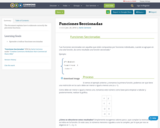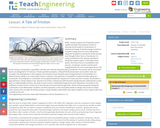
The document explains how to elaborate correctly the piecewise functions.
- Subject:
- Mathematics
- Material Type:
- Assessment
- Data Set
- Date Added:
- 10/27/2015

The document explains how to elaborate correctly the piecewise functions.

Students apply high school-level differential calculus and physics to the design of two-dimensional roller coasters in which the friction force is considered, as explained in the associated lesson. In a challenge the mirrors real-world engineering, the designed roller coaster paths must be made from at least five differentiable functions that are put together such that the resulting piecewise curving path is differentiable at all points. Once designed mathematically, teams build and test small-sized prototype models of the exact designs using foam pipe wrap insulation as the roller coaster track channel with marbles as the ride carts.

Roller coasters projects are frequently used in middle and high school physics classes to illustrate the principle of conservation of mechanical energy. Potential energy transforms to kinetic energy and vice versa, with gravity being the driving force during the entire process. Even though friction force is mentioned, it is rarely considered in the velocity calculations along the coasters’ paths. In this high school lesson, the friction force is considered in the process. Using basic calculus and the work-energy theorem for non-conservative forces, the friction along a curved path is quantified, and the cart’s velocity along this path is predicted. This activity and its associated lesson are designed for AP Calculus. Practice problems/answers, a PowerPoint® presentation and student notes are provided.